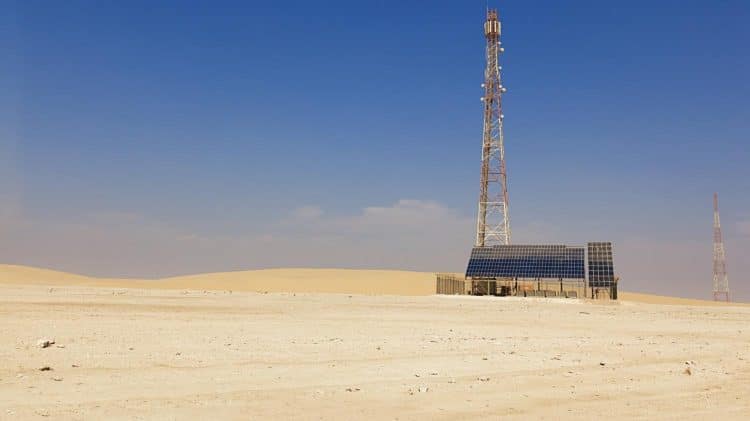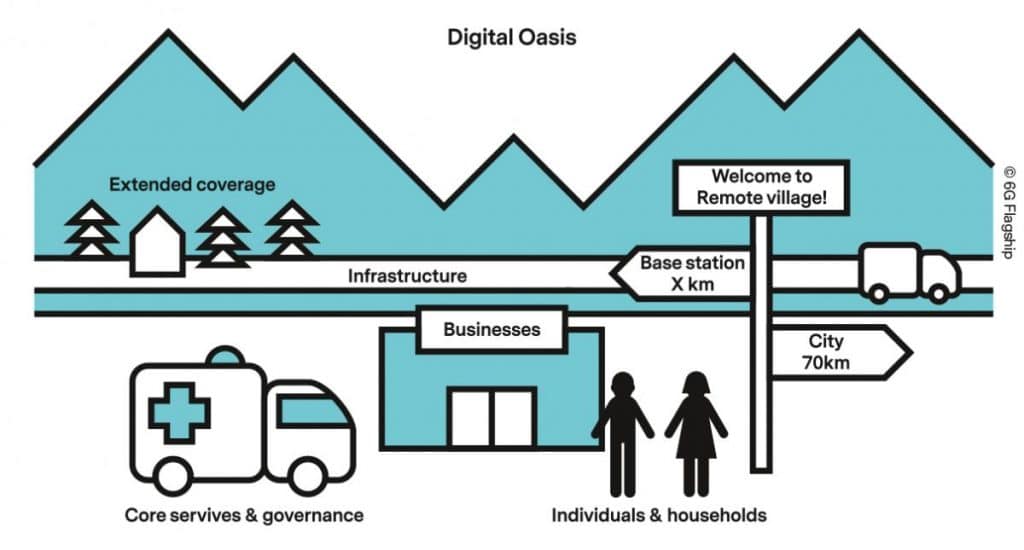
Connectivity for remote areas
Connecting the unconnected is a massive challenge as half of the world’s population remains without any or sufficient internet connectivity. The reasons include low level of income, low population density in the living area or lack of infrastructure such as roads or power grids. These characteristics, among others, reduce network, infrastructure, and service providers’ interest to invest in these areas since expected revenues would be small.
“6G will be a part of the solution needed to solve the constantly increasing problem of the digital divide which is at the core of our 6G white paper,” says Dr. Harri Saarnisaari, who led the white paper team consisting of 34 experts.
Requirements for connecting the unconnected must be included into discussions and development processes since the beginning, not after a new broadband 6G has been defined, Saarnisaari urges. “We have to define globally what we mean, in the 6G era, by affordable and sufficient services that should be available for everyone,” he says. “We believe that 6G could be the first data-driven standard where the unconnected are taken into account since the beginning. And, this consideration must be extended to remote and rural areas as well.”
Spectrum, when it is allocated nationwide, is not necessarily used in an efficient manner on the local level, and rural and remote areas suffer precisely of this mismatch. “Novel, innovative spectrum regulation should open new, feasible ways to improve connectivity in these areas,” Saarnisaari says. “Furthermore, if big operators are not interested to provide local remote connectivity, then maybe local micro operators are.”

Connectivity solutions for digital oases, as the remote and rural spots are called in the white paper, require new approaches. “It seems that a separate rural/remote mode is needed so that sufficient services can be provided while keeping the solutions economically feasible,” Saarnisaari says. “Furthermore, in many places low energy consumption in local relay and base stations is needed to support solar-panel powered operations. Mostly autonomous installation and maintenance functions are also an important factor.”
The white paper covers wireless technical solutions including terrestrial, air, space, power grid, optical and so on. They must be enhanced by sea cables and terrestrial fibre networks. “It is important to realize that we need both local connectivity and backhaul solutions,” Saarnisaari points out. “And we should not forgot air and sea routes that also need connectivity in remote locations.”
To tackle the multifaceted connectivity problem, collaboration between stakeholders is required. Political decision makers are needed to adjust and guide regulations and rules as well as to provide the necessary financial support. Regulators, on the other hand, play a key role in guaranteeing sensible spectrum usage, whereas connectivity providers can offer the necessary infrastructure and services. Local inhabitants must be tightly integrated to express their connectivity needs but also to learn and adopt new technology. Furthermore, local governance, healthcare and appropriate education must be involved to provide the much-needed digital services in future systems thus increasing the value of improved connectivity.
It is also important to understand local culture and to ensure that the community is involved and trusts those who offer connectivity services in the future society. This is particularly true in the developing world. Along with the technology key performance indicators (KPIs) such as bandwidth, latency, jitter, security, and resilience, new KPIs reflecting the increase in economic growth, education, health, gender equality, digital literacy, happiness index, and others in unserved/under-served remote and rural regions should therefore be considered in 6G network design.
“In 6G, connectivity and quality of service is truly measured by the degree in which is reaches individuals – whether in cities or in the furthest corners of the world,” Saarnisaari says. “No-one should be left out.”